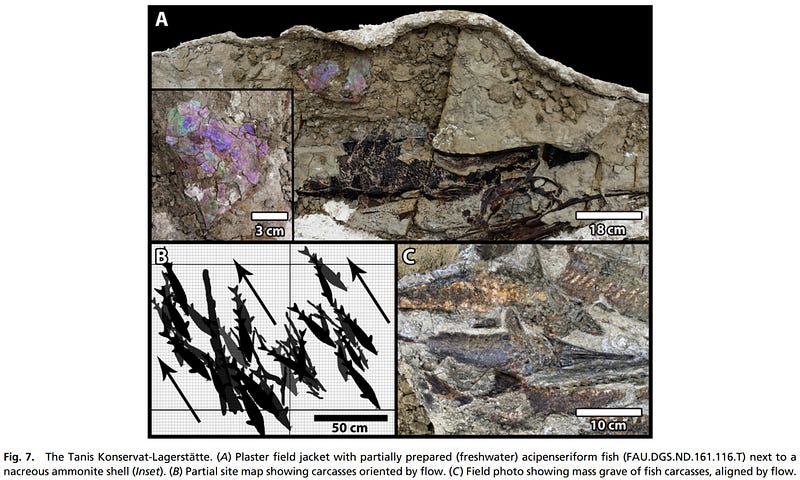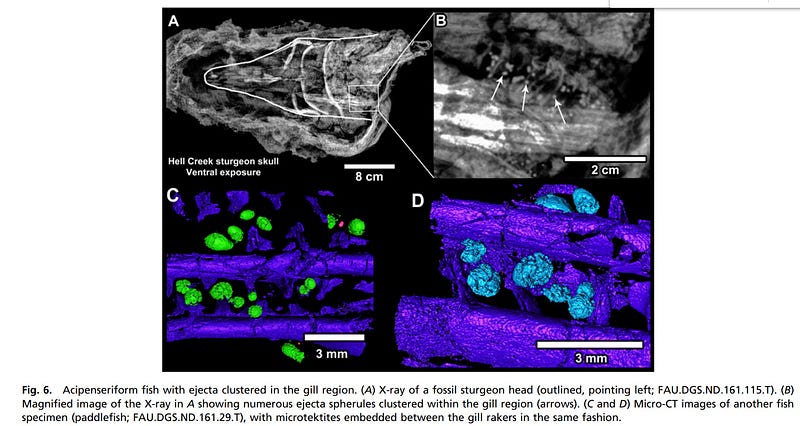Fossils Uncover Dinosaurs' Final Moments on Earth
Written on
Chapter 1: A Groundbreaking Discovery
Recent discoveries in paleontology suggest that scientists may have uncovered fossil beds that capture the final moments of dinosaurs as they ruled the Earth. This groundbreaking finding could significantly alter our understanding of this era, provided it holds up under scrutiny.
Paleontologist Robert DePalma has dedicated years to studying a site he refers to as Tanis, located within the fossil-rich Hell Creek Formation in Montana. While the precise location remains confidential, the site is remarkable for the type and rapid deposition of its fossils.
Geologic time scales typically carry a degree of uncertainty. The fossil record represents only a tiny fraction of the myriad organisms that once roamed the planet. Rarely do we find fossils that can be definitively identified as the first or last of a species, as pinpointing such moments in time is nearly impossible. However, if DePalma and his colleagues are correct, this particular fossil bed was formed within mere hours following the meteorite impact at Chicxulub.
What They Discovered
The uniqueness of the Tanis fossil bed stems from two key factors. Firstly, it seems to have been deposited with remarkable speed. The orientation of the objects within the site is vertical and mixed, suggesting a significant single event that combined both animal and plant materials. Although Tanis is not located near the Chicxulub impact site, it is surrounded by tektites—glassy fragments formed from molten debris resulting from meteorite impacts. By analyzing the trajectory and speed of debris ejected from Chicxulub, scientists have been able to estimate how quickly these tektites settled at Tanis.
The team examined various meteor debris types at Tanis and determined that they would have landed in successive waves based on their angles of ejection. They concluded that debris would have begun to fall approximately 13 minutes after the impact and continued for about two hours. The preservation of tektite impacts alongside fossil remains provides compelling evidence that these events occurred in close temporal proximity.

Fish species that once thrived in the warm Western Interior Seaway, a region now known as Montana, likely perished rapidly due to the catastrophic conditions. The Chicxulub impact may have triggered a global earthquake of unprecedented magnitude, causing what is termed a seiche—a phenomenon that generates standing waves in a body of water. This event could have unleashed 35-foot waves capable of inundating the local terrain. Many of the trees identified by DePalma in the chaotic fossil mix contain spherules of meteorite debris preserved in amber. This impact glass closely resembles samples collected from the Chicxulub crater.

The fish fossils uncovered at Tanis even contain microtektites lodged in their gills. The imagery is stark: mere moments after the asteroid's impact, the low-lying area would have been violently shaken by waves, even as the sky rained fire. Trees would have either toppled into the water or ignited in flames, while fish suffocated in a deluge of sediment. The fossil assemblage at Tanis presents an extraordinary mix of creatures—an outcome one might expect from a cataclysmic event where ecological systems were abruptly disrupted.
DePalma has cataloged various other significant finds at the site, including submerged ant nests with drowned ants, potential wasp and mammal burrows, shark teeth, and the remains of large sea turtles. The discovery of at least three new fish species, a gigantic ginkgo leaf, and several new species of both animals and plants further highlights the site's importance.
By correlating the timing of the Tanis events with the known Chicxulub impact and the characteristics of the deposits, DePalma and his colleagues, including Professor David Burnham from the University of Kansas, have constructed a remarkable timeline. The combination of preserved tektites and the chaotic fossil layers strongly suggests that these events were nearly simultaneous. Although further validation from the scientific community is necessary—and debates are likely to continue for years—this discovery may provide a specific geological record detailing the early hours following the extinction event marking the end of the Cretaceous and the beginning of the Paleogene.
The New Yorker article mentions that while DePalma has a history of lofty claims, there remains the possibility that his findings could indeed be as revolutionary as he asserts. A precisely dated fossil record of the impact event, even from a single location, could illuminate numerous questions regarding Earth's conditions immediately following the asteroid strike.
Now Read:
- Dinosaur-Killing Impact Crater Shows Rock Can Flow Like Fluid
- Dinosaur-Killing Impact May Have Superheated Earth’s Atmosphere for 100,000 Years
- The Extinction Event That Wiped Out the Dinosaurs Almost Didn’t Happen
Chapter 2: The Impacts of the Chicxulub Event
This section will explore the implications of the Chicxulub impact on terrestrial ecosystems.
The first video titled "The Day the Mesozoic Died: The Asteroid That Killed the Dinosaurs" provides a detailed overview of the catastrophic impact event and its aftermath.
The second video, "The Death of the Dinosaurs: 27 Years Later," reflects on the long-term consequences of the extinction event and the ongoing research in paleontology.